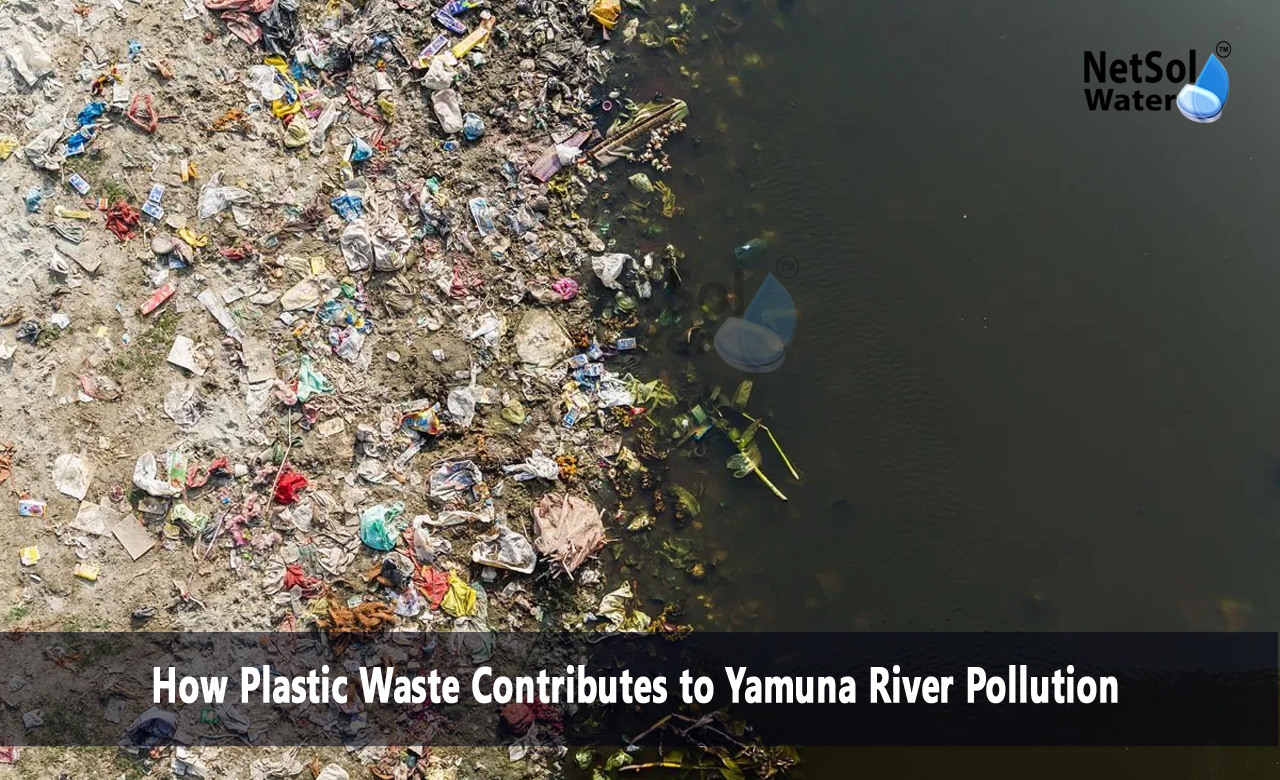How Plastic Waste Contributes to Yamuna River Pollution?
Plastic waste is now among the greatest polluters of the Yamuna River, greatly lowering its water and aquatic life quality. Plastic waste dumping in the river causes long-term environmental and human damage as well as ecosystem damage. It is necessary to realize how plastic waste contributes to Yamuna River pollution so that environmentally friendly means can be created to bring an end to the crisis.
The contribution of Plastic Waste towards Yamuna River Pollution
Plastic Waste Discharge Directly
Plastic waste from households, markets, and industries is disposed directly into the river, causing severe pollution. Common wastes include:
· Single-use plastic packaging material bags, bottles, and food packaging materials.
· Invisible microplastics that clog up and ultimately lead to the death of aquatic organisms and destruction of aquatic habitats.
· Plastic waste hindering the natural flow of the river, leading to dirty and stagnant water bodies.
Impact on Aquatic Life
Plastic pollution has severely impacted fish and other aquatic creatures in the Yamuna River. The effects are:
· Ingestion of pieces of plastic by fish, birds, and other animals, leading to complications and death.
· Entanglement with plastic waste, hindering movement and suffocation.
· Disruption of breeding and feeding grounds of aquatic animals, reducing biodiversity.
Microplastics and Toxic Chemical Release
Plastic trash along the Yamuna River breaks down over time into microplastics that contaminate the water. Microplastic pieces of plastic:
· Absorb and release poisonous chemicals, including heavy metals and toxins.
· Make their way into the food chain, affecting human beings who consume fish and other aquatic food.
· Decrease the water quality, rendering it unappetizing for drinking, irrigation, and other purposes.
Drainpipe Blockage
Plastic trash clogs up the sewerage channels and storm drains and results in:
· Increased city flooding due to water overflow.
· Stagnant water, which acts as breeding grounds for the mosquitoes and other disease-producing pathogenic organisms.
· Reduced efficiency of treatment by sewage treatment plants, with increased untreated material being discharged into the river.
Adding to land pollution and air pollution
The plastic waste incinerated by litter on Yamuna River banks releases toxic gases into the environment. Such a practice:
· Land and Air Pollution Role
· Pollutes the atmosphere, leading to respiratory diseases among residents in its vicinity.
· Releases toxic dioxins and other carcinogenic chemicals.
· Does not biodegrade microplastics, which still find their way into the river through rainwater runoff.
Inefficient Waste Management
There is an inefficient waste management system that is leading to plastic pollution of the Yamuna River. Some of the significant issues are:
· There are no effective garbage collection and disposal systems.
· No effective recycling centers.
· Low citizen awareness regarding how plastic waste pollutes the environment.
Read This: Sewage Treatment Plant Manufacturer
Sustainable Practices to Counter Plastic Waste Pollution
Implementation of Strict Bans of Single-Use Plastics
Tough plastic prohibitions should be enforced by local authorities and governments to prevent the production of wastes. They are:
· Promoting the utilization of eco-friendly substitutes such as cloth bags and biodegradable packaging materials.
· Penalizing industries and individuals for plastic waste management violation.
Waste Collection and Recycling Optimization
Implementing efficient plastic waste collection and recycling programs will curb wastage and cause less pollution. Some of the efficient ways are:
· Setting up recycling centers along the river to instill good practices towards waste management.
· Establishing extended producer responsibility (EPR) among companies.
Public Awareness and Community Involvement
Educating citizens on how plastic pollution impacts their lives will result in behavior change. Public awareness programs should aim for:
· Conducting river cleaning drives with volunteers and locals' participation.
· Conducting campaigns in schools and markets to dissuade the use of plastic.
Promoting the Use of Biodegradable Products
Facilitating the use of biodegradable products will cut down on plastic usage by a significant percentage. Some of the key efforts are:
· Increasing production of compostable packaging.
· Promoting start-ups and companies that produce sustainable substitutes.
Developing Innovative Waste Management Technologies
Innovation in technology related to recycling and waste management is better equipped to deal with plastic pollution. Some of the potential solutions are:
· Developing AI-driven mechanisms for efficient segregation of waste.
· Impose on chemical recycling technologies converting plastic waste into valuable commodities.
Conclusion
Plastic garbage is a key cause of Yamuna River pollution and contaminates water, marine organisms, and even human health. Bulk plastic usage resulting in unreasonable wastages inflict irreparable harm on nature. Efficient strategies like stringent actions, better dumping, social awareness, and environmentally friendly substitutes need to be incorporated to remedy the issue. It is through joint efforts only that we can protect the Yamuna River from plastic destruction and a cleaner and healthier world in the future times.
Do you need an advice or assistance on selecting the best water and waste water treatment unit? We have solutions for all your problems!
Let us know your problem, our experts will make sure that it goes away.
For an assistance or related query,
Call on +91-965-060-8473 Or write us at enquiry@netsolwater.com



